NFTs
Colborn Bell, Founder of the Museum of Crypto Art, Isn’t Worried About Wooing the Traditional Art World: A Q&A
Is the metaverse the future for museums?
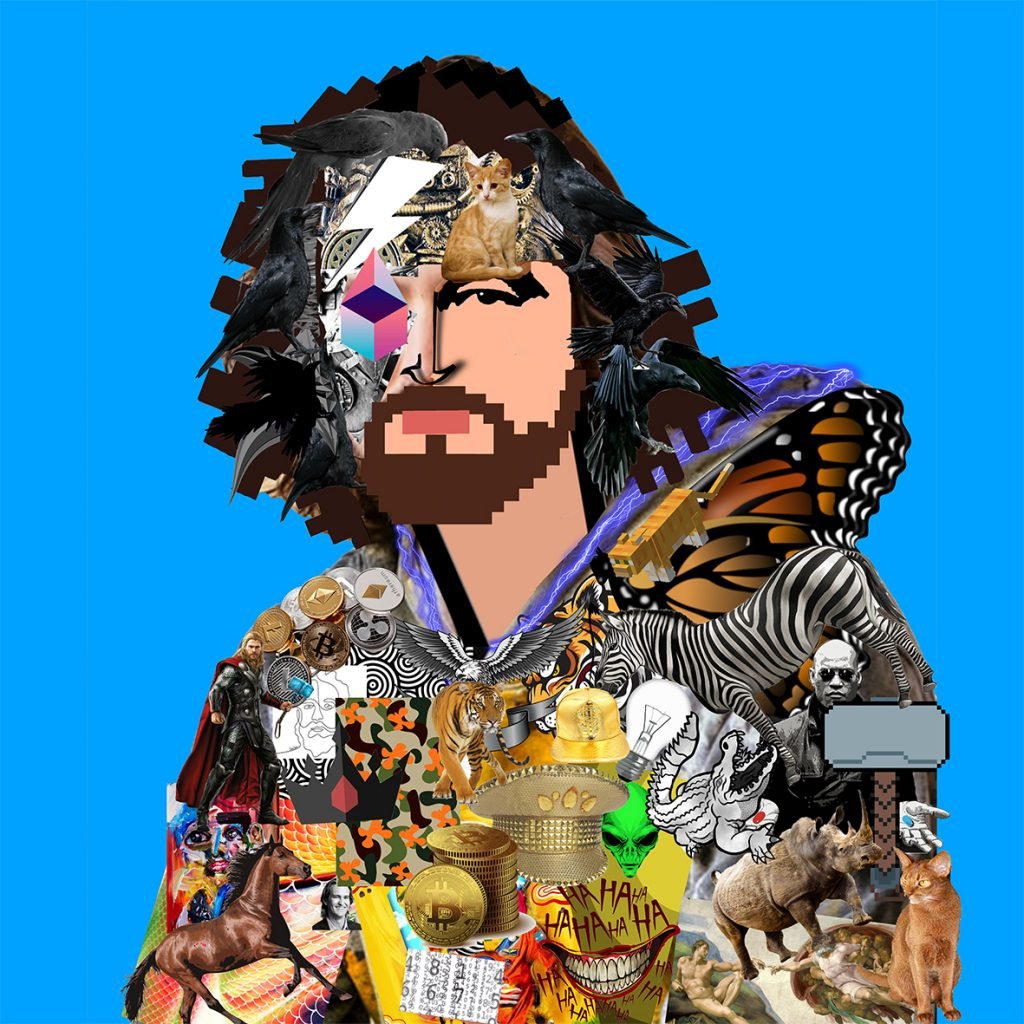
Is the metaverse the future for museums?

Ben Davis

Enter the Museum of Crypto Art (M○C△) right now and you will find a show of about 50 artworks by many of the big names of the NFT space, drawn from its permanent collection: Frenetik Void’s Superyó, a surrealist image of a giant head; Dmitri Cherniak’s Wreck a Man, his pastel abstraction evoking the art of in-demand mystical painter Loie Hollowell; Trevor Jones’s Cubist Satoshi, an animation in which the facets of a Cubist painting reassemble themselves into the face of Bitcoin creator Satoshi Nakamoto; and, of course—the pièce de résistance—CryptoPunk #6926, a blocky, 16-bit image of a smoking punk in a hoodie.
None of this happens in real space, though: To find it, you have to venture into the cartoon landscape of Somnium Space, an online world. The dream architecture of M○C△’s building seems to float, and its galleries are bisected by an odd, impossibly torqued spiral stair. Works are hung like paintings on its virtual walls, but without the constraints of real weather, they are displayed on both the outside and the inside of the museum. Some of the art is also shown on the ceiling. As your avatar roams the virtual galleries, clicking on artworks calls up info, including a link to their listing on OpenSea, the NFT marketplace, and the price they were acquired for, in Ether (though M○C△’s works are not actually for sale).
Amid the tsunami of interest around NFTs and the metaverse, the Museum of Crypto Art—and its so-called Genesis Collection, 200 pieces by 200 artists who laid the foundations for the scene’s meteoric rise—has become a touchstone. Colborn Bell is the face of the institution. In the field’s short span, he is considered an OG, though his first purchase of a crypto artwork—Lady Luck by Miss al Simpson, a trippy image of a woman in a fedora—was only in February 2020.
Bell founded M○C△ shortly thereafter with Pablo Rodriguez-Fraile (the two have since parted ways). The museum is now incorporated as a nonprofit foundation, but with a crypto twist: it has its own “governance token,” $MOCA, which promises to allow owners to vote on the direction of the museum (the exact mechanisms are still in development). Half of the supply of this bespoke currency is reserved for a fund for permanent-collection acquisitions, with donors getting a say in how the museum is run in exchange for their gifts. With the token currently trading at about $5.86, and a fixed supply of 10 million tokens, the museum has the equivalent of a $29 million war chest.
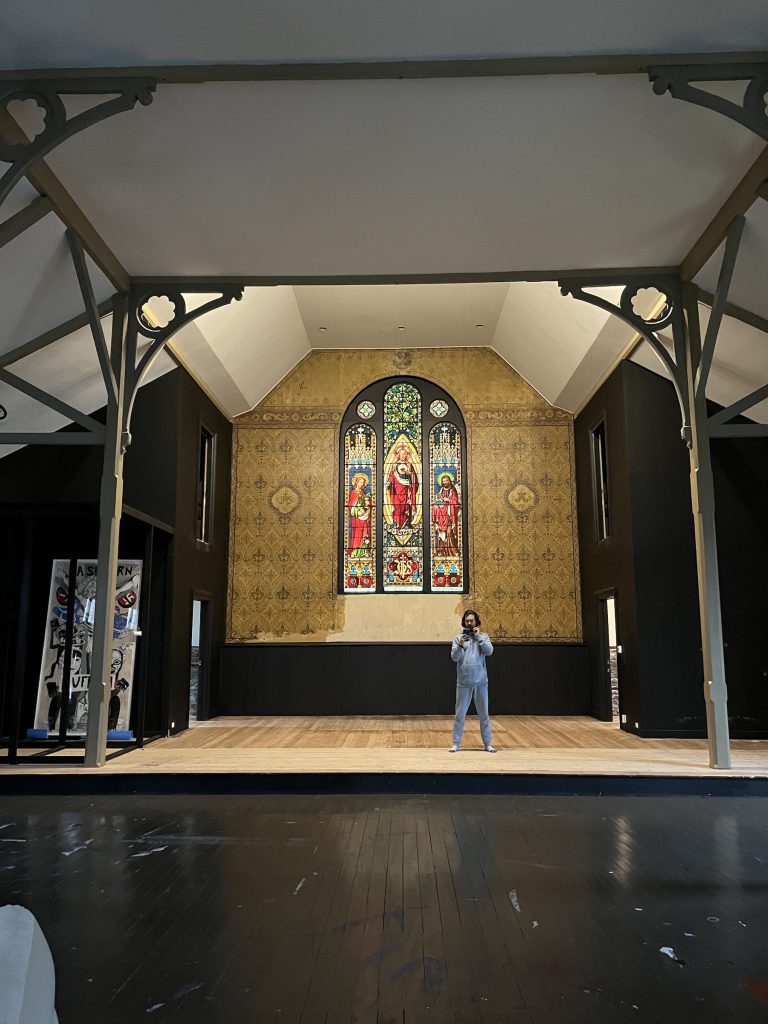
Colborn Bell in the Museum of Crypto Art’s new IRL space in Kingston, N.Y. Photo courtesy Colborn Bell.
M○C△’s ambitions extend beyond Somnium Space. Shows of digital art selected from the collection have popped up IRL around the world, and Bell says he has just sealed the deal on a space in a former church in Kingston, N.Y., which he is planning to make a physical extension of the Museum of Crypto Art.
Recently, I talked to Bell about his view of the NFT canon, the inspiration for M○C△, and where he thinks culture in general is going.
What is a typical day for you right now running M○C△?
No days have been typical lately. I try not to take so many video calls anymore. You’re on Twitter, you’re in Discords, you’re running through various marketplaces.
We designed something like eight exhibitions in the course of a couple of months. So I’m doing a lot of curating, I’m going through the collection, I’m putting stuff together thematically. I’m also doing everything that would probably be involved with being a traditional museum curator and art dealer—basically being a therapist to artists. It’s very much like drinking from a fire hose right now, so I just try to do all of the most important things as they come in.
NFTs are incredibly hot at the moment, so people want to host and do things physically with our art, on our behalf. So in the past two months we’ve had physical shows in Denver, New York, Boston, Berlin, Prague, and Shanghai. It’s very, very easy to have these works exhibited all over the world, and it’s obviously very cheap to do so.
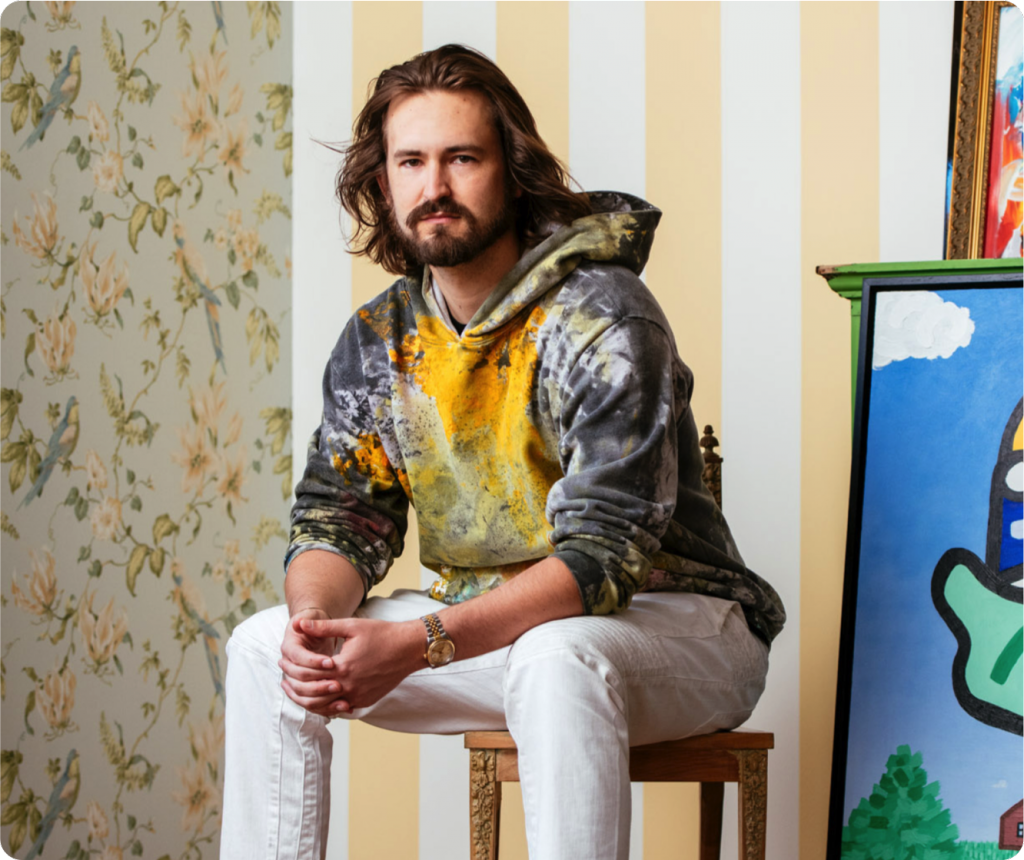
Colborn Bell. Photo: Courtesy of the Museum of Crypto Art.
What’s your background? How did you discover art and crypto art?
I was born and raised in southern California, went to school in New York, studied economics and psychology, then did as much investment banking as I could take—about six months. I went from there to United Nations, where we were building an infrastructure bank in East Africa.
From there, I went to a wealth management firm in Santa Monica started by vegan Buddhists, did that for about two and a half years, and then started running the U.S. family office for a foreign family. It was in that capacity that I had the opportunity to find and explore crypto.
I bought Ethereum in February 2017, so I was quite early. I took every dollar I had at the time and just threw it in. Because I had this background in venture capital and private equity, investment banking, and trading, I was like a fish in water. I just had the right skill set for the job at a time when it was really taking off.
So I was doing a lot of advisory work, being a bit of a dealmaker and an early participant in the 2017 ICO [Initial Coin Offering] boom. That put me on the bleeding edge of what was happening in the space. It was during that time that I participated in the ICO of Decentraland, which launched in January 2020. So I was familiar with virtual worlds and thinking about what I wanted to see in these worlds.
The inspiration for the Museum of Crypto Art actually came from a museum trip I took in central Brazil, to Inhotim, an open-air park filled with art. It wasn’t anything like the traditional Chelsea gallery or the Metropolitan Museum, where you’re on a curated path or a white-walled room. You’re out in nature, you’re by the river, you’re walking through the jungle, you see something in the distance and follow your imagination instead of following a path somebody is telling you to follow.
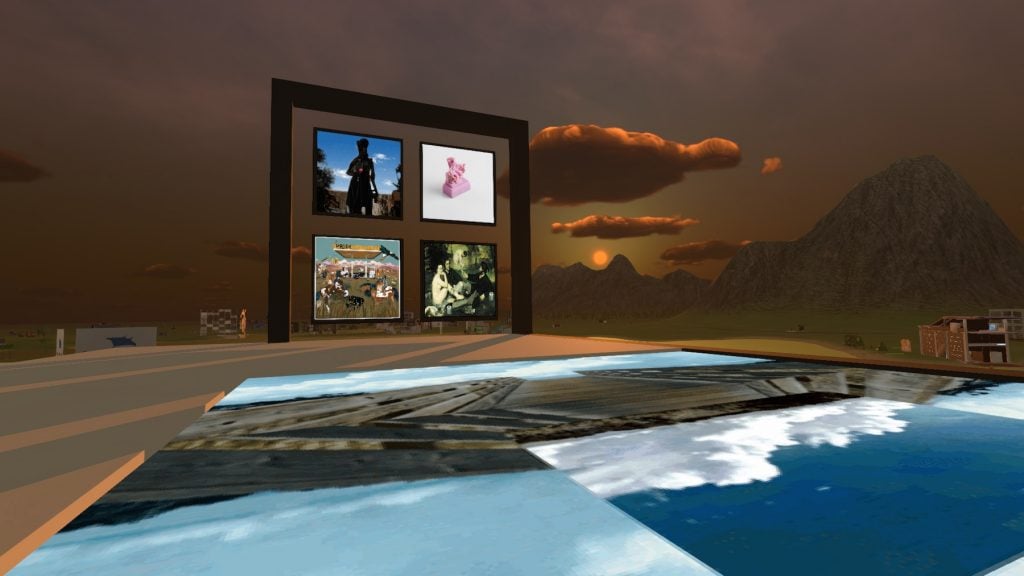
Art on display in the Museum of Crypto Art in Somnium Space. Image courtesy Museum of Crypto Art.
When was the first time you heard the word “NFT”?
I was an original adopter of MoonCats. I remember very distinctly it being a warm summer day in California, and I was explaining to my sister how to use MetaMask and how we were using the CPU mining of the computer to generate one of these pixelated cats. The story was we were rescuing them from the moon. It was all very fun and silly.
And then from there I played around with CryptoKitties, and I understood that the land in Decentraland was an NFT. But I only bought my first piece of crypto art on February 12, 2020.
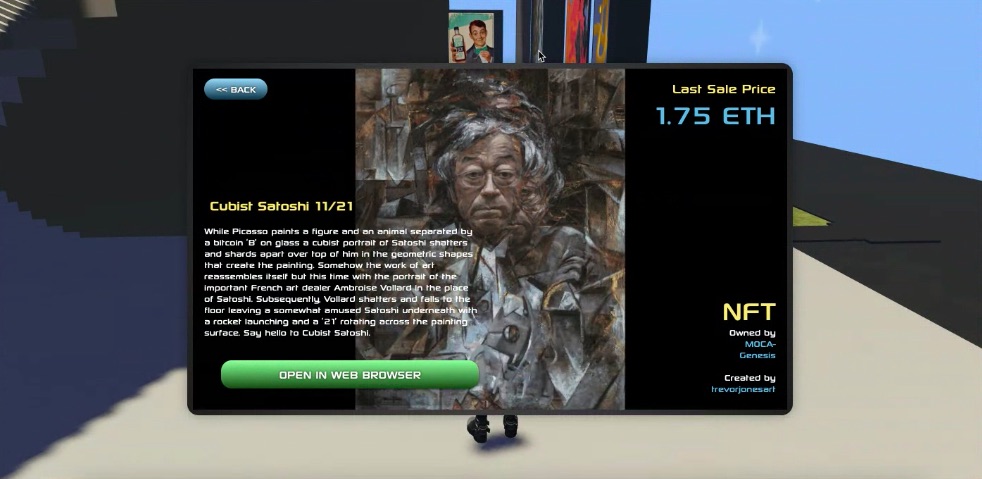
Trevor Jones, Cubist Satoshi, on view at the Museum of Crypto Art.
Is there a particular thing you look for in art, personally?
What’s important to me personally is the concept of crypto art itself. Art is redirecting the conversation away from what it was, where crypto was associated with money laundering and drug dealing. This is a visual language that speaks to the power of blockchain technology to return self-sovereignty to the individual, to give them the rights to their data, to give them a right to privacy and anonymity on the internet—and to show the true power of what an open-access, permissionless network like Ethereum does when people all over the world can take their creativity, treat it as art, and begin to sell it without any intermediary who can say, “No, this is not art. This does not belong.” Suddenly the scope of what we can include broadens tremendously.
I mean, those things are there—the money laundering and drug dealing, they exist.
Yeah, but there’s way more of that in cash. And the banks facilitate way more of that than the blockchain ever does. With regulators, it’s almost like because they can’t control crypto, they fear it.
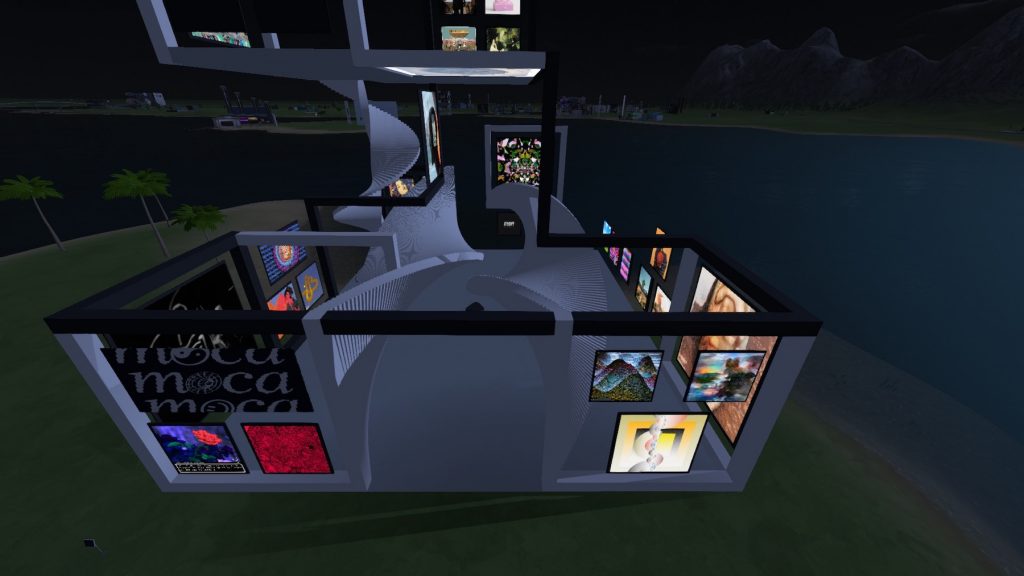
The Museum of Crypto Art in Somnium Space. Image courtesy Museum of Crypto Art.
I’ve heard you talk about the virtual art world being superior to the traditional art world. What’s the superiority of virtual experience to traditional experience in your assessment?
It’s just scale, right? It’s just scale and cost. I can do everything at probably 100 times the speed of a traditional museum or a traditional gallery, and I can do it at a 99 percent reduction in cost.
It’s also about access. Anybody at any time can go online and go into the museum and see the artwork and begin to learn the history and see who the formative creators were. And in a field that is incredibly noisy, I love when artists point new people to the museum first so that they can begin to ground themselves in how this thing emerged and the people were who were there before it was this incredible market explosion.
Eventually, the idea is that all of the art becomes open-source: anybody, anywhere, at any time can take whatever art they want, go put it on some screens, go host an NFT meetup. I want people to use the art from the museum as a global public good.
In terms of your view on the traditional art world, I’ve heard you talk about the changing audience, saying that audiences now demand some kind of digital, interactive component. I’ve heard you say that the future for art is “more Meow Wolf and less Metropolitan and Gagosian.” What do you mean?
This is a digital world; the kids are constantly connected. When I see kids in art galleries, what do they do? They take pictures of the paintings with their phones, right? Whereas I would go and I would just experience them. But there’s just this innate digital connection that is being pushed through all of society. And the way that augmented- and virtual-reality technology is being promoted by the largest companies in the world—it’s an inevitability that we will just get to this point where most people will be experiencing art through some sort of screen, through glasses or phones.
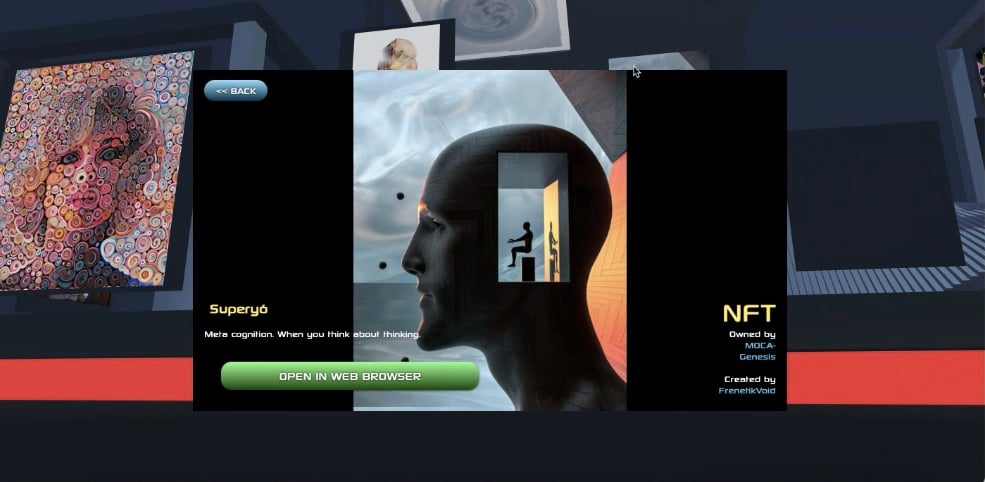
Frenetik Void’s Superyó in the Museum of Crypto Art.
There was this moment last year when people were cut off from the physical world because of the crisis and were stranded online. Is the boom right now connected to that moment?
The museum was founded before Covid happened, but a couple things happened because of Covid. DeFi [Distributed Finance] exploded in the summer of 2020, and after that the NFT market really picked up. And I’m sure that is all directly tied to Covid, because people were sitting at home, on their computers, and they were freaking out and looking for some way to connect to people. And the NFT community is wonderful, it’s a really positive, loving, open space. And all of that combined with the launch of Clubhouse, where there was a lot of information sharing. It was almost a perfect storm.
That perfect storm has brought a lot of speculation and get-rich-quick hype. M○C△ is incorporated as a foundation and has this pledged not to sell off its collection. Can you talk about those decisions?
I mean, look, we became a foundation because for me there was an actual art story here, right? I thought that I had a partner who was acting in bad faith by putting stuff into the museum that he would heavily collect. But I felt there was something more important at stake. There was a breadth and depth to the space that deserved to be recognized in a serious way.
The money is not important to me. The art is priceless. Ultimately I care about the message that the art carries in bringing to the world the power of blockchain technology and cryptocurrency.
I think we’ve done an incredible job of empowering a circle of technologists and of onboarding a wider circle of creatives. I think that the dialogue between these technologists and these creatives will ultimately allow these technological systems to flourish and maximize their full potential in what I think is going to be the most important and powerful financial architecture of our time.
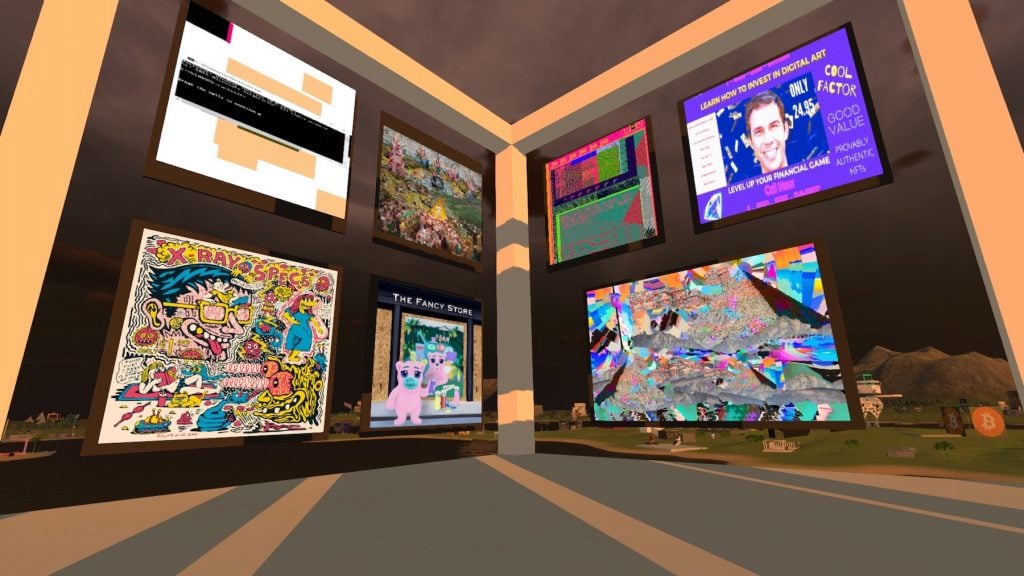
Art on display in Museum of Crypto Art in Somnium Space. Image courtesy Museum of Crypto Art.
The M○C△ Manifesto says, “In tying relationships, investments, and interests together, we create resilience and multiple access points for all members.” What does this mean? Can you explain the governance of the museum?
I consider us to be in a decades-long transition from a single curatorship to a quasi-DAO [Distributed Autonomous Organization] to eventually a full-on DAO.
I’m saying it’s in a transition to a DAO because DAOs at this point really don’t exist. There’s an amazing joke that the only thing slower than a museum is a DAO.
I’m building the tools that give people access points to begin to participate and feel a part of the idea of a community-owned museum. There’s a million ways to do this, to allow various access points for certain members and to return voice and power to the original artists—but these things take a tremendous amount of time.
I’m so proud of what we’ve been able to accomplish in such a short period. But I like to think on a decades-long timeframe because I know otherwise you do get caught up in the hype and trend cycles. You really have to block that out and think long-term and just build.
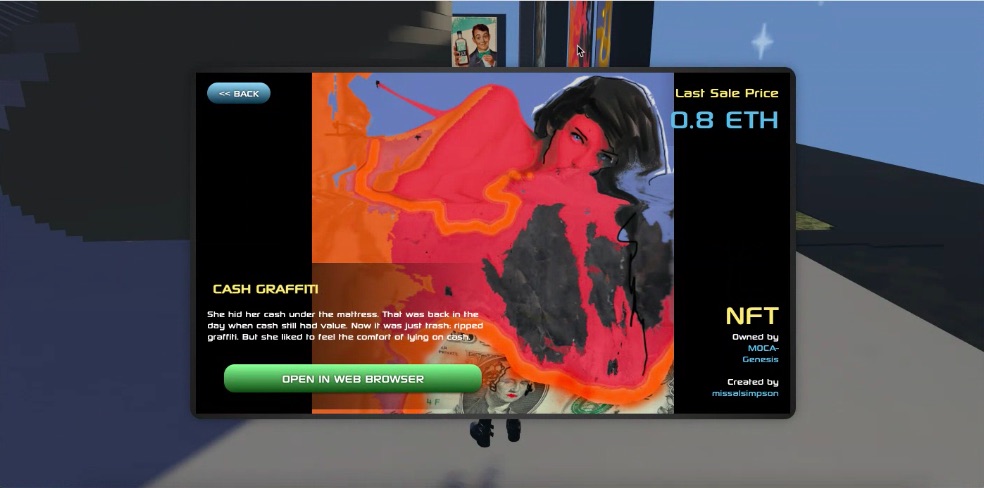
Miss Al Simpson, Cash Graffiti, in the Museum of Crypto Art.
How do you see M○C△’s role in the NFT art scene?
What is happening is that there are a lot of individuals who came in, got excited about the art, and bought tremendous pieces of work. They might really connect to that work and that story, but they’re finding that it’s in the best interest of the space and the artists if we are the ones telling that story, as opposed to them.
For many of these early collectors, it was never about the money. It was about supporting the artists. Going forward we want those patrons to have an outsize voice in what becomes of the museum and what types of shows we put on and what we seek to explore with crypto arts. That’s the idea of the $MOCA token: that people will be able to vote on curation, vote on expansion into new worlds, and just give the museum more of a community-led and community-driven approach.
The term “decentralized” gets thrown around a lot, but my goal is over time to turn over as much power and return it to the people who care and are passionate about crypto art. It will be an open-source, decentralized museum—which is obviously a total inversion of the traditional museum model.
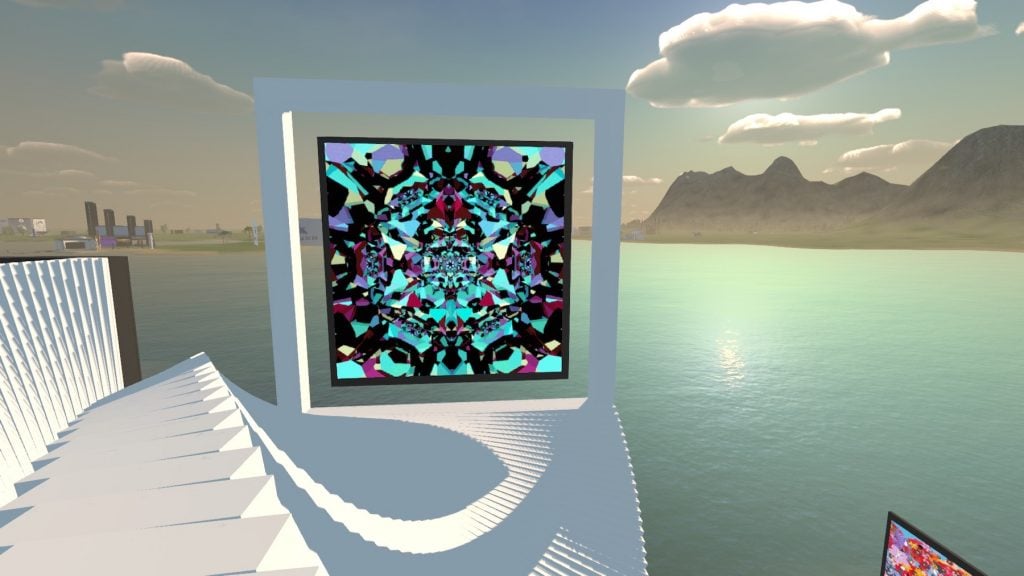
Art on display in the Museum of Crypto Art in Somnium Space. Image courtesy Museum of Crypto Art.
There’s this phenomenon of pumping your own bag: People have got their assets, they want to promote them to pump the price. So when you have these kinds of new, open-sourced models of curation, there have to be some kind of guard rails, right? There has to be some kind of central control point.
Look, there is a foundation and I’m a director of that foundation and I have a responsibility to that foundation. The artworks are assets of that foundation. There is a traditional structure here.
But for me, I couldn’t care less about who owns the artwork or what it means to have a token in a certain wallet. I care more about what it means to give the artwork freely and let people do what they want with it. For me, ideas are so much more important than capital. A big idea is priceless, and I think this is a big idea.
And I think there’s something nasty and wrong about the way that traditional finance interacts with the contemporary art world and hyper-commodifies priceless works of art. I get that in order for something to be considered valuable and stewarded and cared for, there needs to be a high price tag on it. But the traditional art world was never for me for a reason.
The arts and culture of our time are moving in a direction that is so far from what the traditional contemporary art world has become. In the same way that cryptocurrency sought to build a financial revolution in parallel to the existing structure of banks and hedge funds and politicians, we are building an art world in parallel. And it’s not exclusionary. We’re telling people to come join, come understand—just don’t bring the values that you had.
The real OGs and artists and stewards of this space—nobody is here for a flash-in-the-pan moment. We’re here because we believe in something so much more integral.
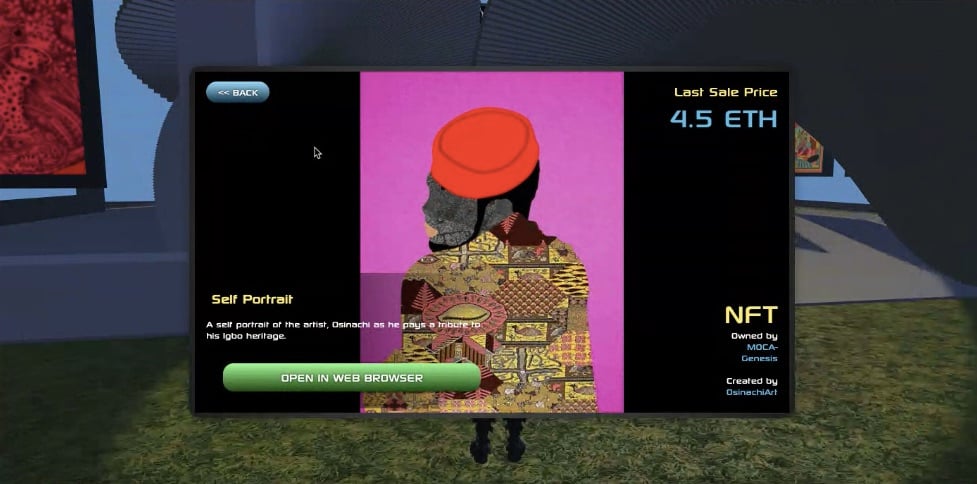
Osinachi, Self-Portrait, in the Museum of Crypto Art.
It’s a symmetrical conversation in a way, because a lot of the traditional art world views crypto art as hostile territory in very much the same way. It feels very financialized and full of these opaque games operating in ways they don’t understand.
It’s unfortunate that it just so quickly became what it became. It was like the Beeple sale was an invitation to a gold rush.
Did you feel a big change in the community?
Of course, of course. Look, the community was small. I knew everybody. I knew all the artists and I knew every single piece that was released. I could be everywhere at once. Now I can’t. For the most part, I have totally stopped collecting. I’m uninterested at this stage.
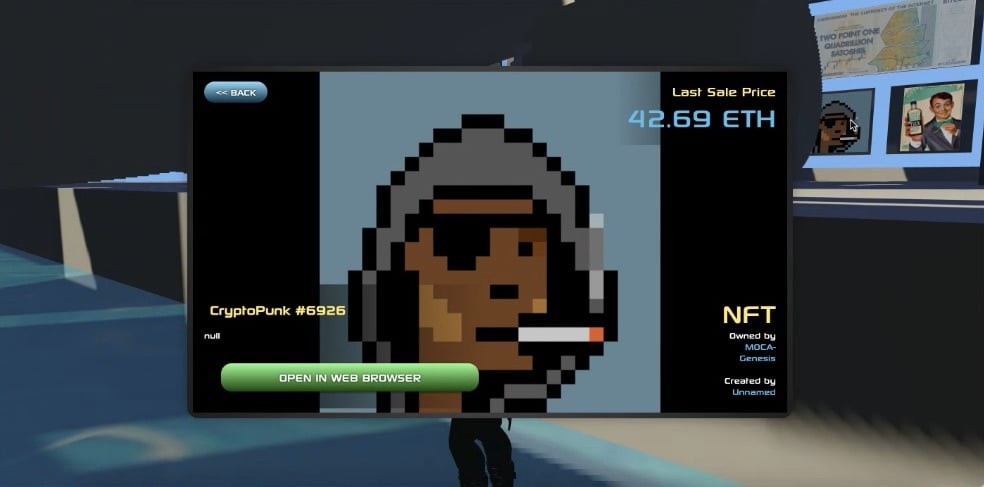
CryptoPunk #5926 in the Museum of Crypto Art.
M○C△ is trying to build the canon or tell the history of crypto art in a space that’s very defined by the now, as trends wash over the scene. Everything is PFP [profile pics] art right now; maybe it’ll be a different thing in a second. How do you think about that? Is building a canon of this stuff futile? Is it going to change constantly?
I think we’re due for a washout. I think the market is probably wrong on a lot of what the actual art is here. And I think only in time will we begin to recognize the creators who are working with deep intent and begin to filter out what is the real art.
But there is a permanent history that nobody else knows because they just weren’t there. There is a collection that I have created that nobody else has because they just weren’t there.
NFTs are definitely an interesting market innovation for traditional digital artists—but for me that’s just not the core of what I find particularly important or interesting.
To what extent do you think that early group that was there before the Beeple sale forms the bedrock of the scene?
Those people aren’t going anywhere. Because, look, inevitably the NFT market will crash and it will burn. But I have total faith in these people that we’re all going to be here and be like, “OK, you all are idiots. We told you so: Obvious bubble. But we’re still here and we’re still going to make art, and we’re going to do it in the values that speak to us.”
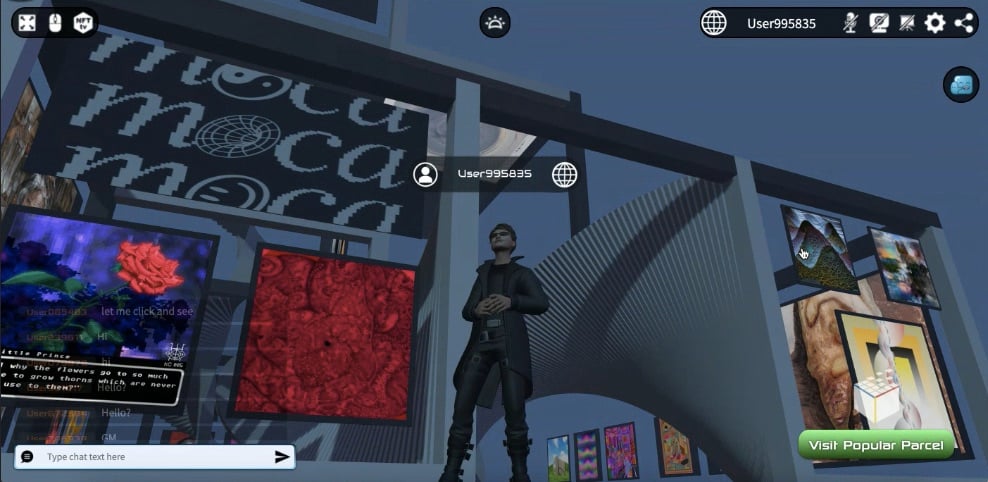
Screenshot of a visit to the Museum of Crypto Art in Somnium Space.
What do you think is the most important thing for people to know?
If you want to begin to understand crypto and you like NFTs, then buy an NFT. I think people learn and start to care when they start to get invested.
But also recognize the importance of blockchain security. You have to understand what a private key is, you have to understand what a public key is; you have to understand how to properly secure crypto; you have to understand how to send crypto.
There is an underlying transactional mechanism and a custody and stewardship mechanism that people have to be familiar with before they begin to enter and play in the space. The consequences for not understanding that are permanent and irrevocable loss.
There is no one who is going to insure your NFT, nobody who is going to put your NFT in a freeport. You are your own custodian. You are liable for everything that you have. If you do not understand what that means, then that is probably the first place to start.